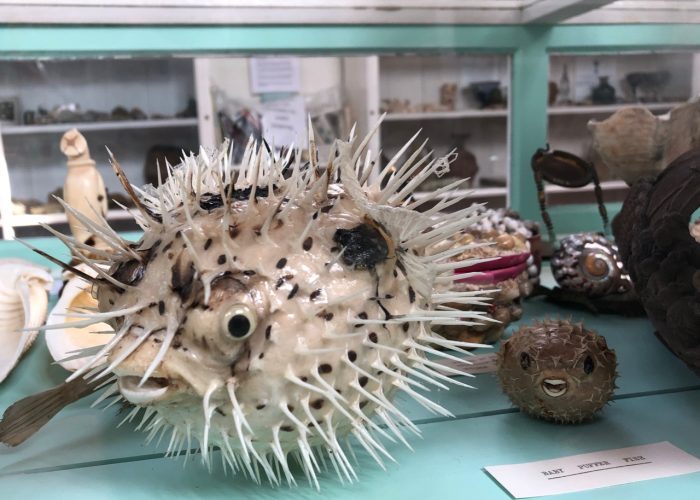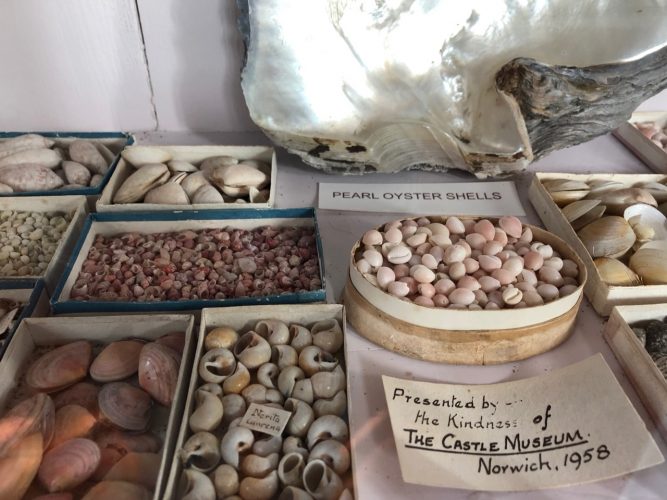Many museums are closed at the moment due to the ongoing pandemic, and I hadn’t called in advance to check whether the Shell Museum would be open. So when I arrived half an hour after opening time to find the doors locked, I wasn’t sure whether I would be able to visit. But a minute or two after I rang the doorbell, the curator emerged from their house opposite and opened up for me, their first visitor of the day.
The Shell Museum was built in 1915 by Sir Alfred Jodrell and stands in its own grounds below the village church in Glandford, Norfolk. The building is a single room with a high ceiling, filled with light from high windows. Scallop shells decorate the pale green woodwork around the windows and walls. The collection is mainly arranged in wood and glass cases and includes shells of all sizes, decorative objects made from shells, and all kinds of other objects, some more closely related to the museum’s theme than others.

There are shells piled on dishes, shells gathered in warped and faded cardboard boxes, and shells arranged in roughly geometric patterns. Large shells serve as bowls, filled with smaller specimens, and bell jars contain arrangements of shells, corals, seahorses and dried fish. Some of the arrangements are highly elaborate, such as a lady standing under a tree-like profusion of different species of flower, all made of shells of different sizes and colours. There are humorous touches too, like the puffer fish with stuck-on goggly eyes.

Jodrell built the museum to house his own collection of shells, which he acquired over some sixty years. The collection has been added to many times since then, and labels mark the generosity of numerous donors. The labels are a refreshing change from those found in larger museums. Some are printed, in numerous different fonts, other labels are typed, and many have been written by hand. The handwritten labels give an especially strong impression of a museum looked after by many people in its hundred-plus years. Some labels identify the shells and others acknowledge donors, but many of the shells are not labelled at all. The museum never feels very scientific in its display, and the shelves without labels contribute to the overall impression of the place: objects displayed primarily for their visual appeal.



